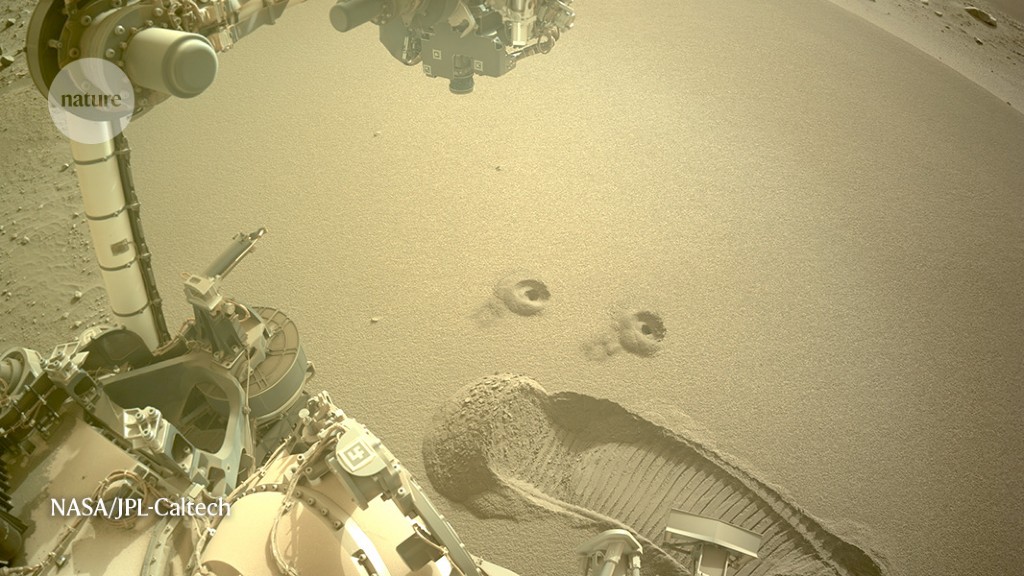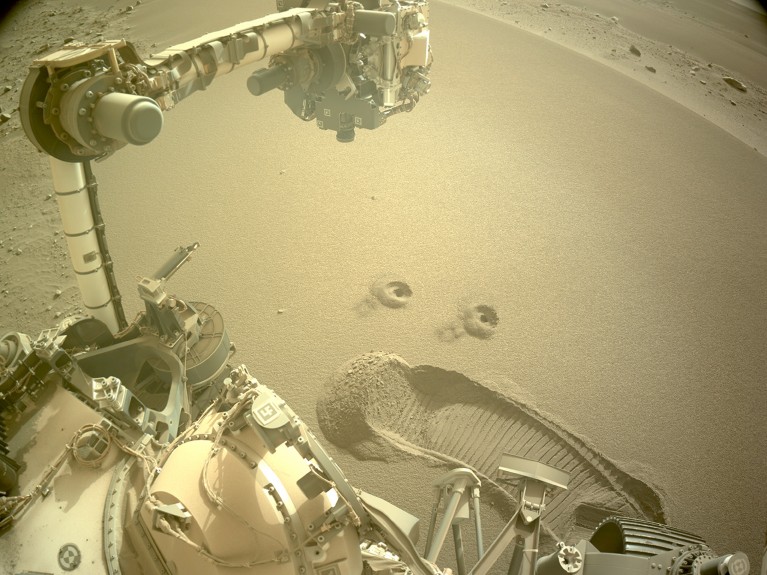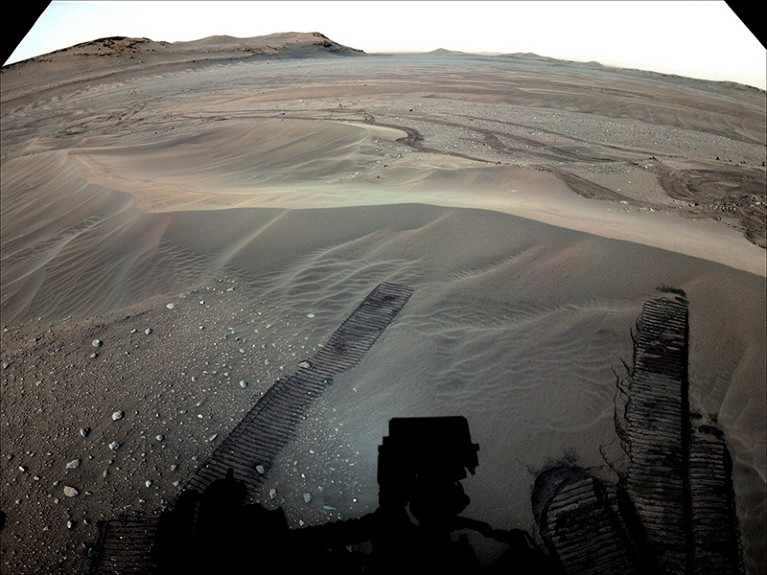The Perseverance rover, with two holes that it drilled in the Martian surface in early December.Credit: NASA/JPL-Caltech
NASA is about to store some luggage for a trip home from Mars.
As early as next week, the Perseverance rover could start dropping ten test-tube-size cores of rock and dirt onto the ground of Jezero Crater, Mars. Perseverance has been collecting the cores since it landed in Jezero in February 2021, and it has accumulated a range of scientifically intriguing samples. NASA and the European Space Agency plan to send another spacecraft to fetch the samples, which will be returned to Earth in about a decade.
Depositing the cores is an early step toward the first-ever Mars sample return. “We’re coming up on this really big and exciting milestone,” says Meenakshi Wadhwa, a planetary scientist at Arizona State University in Tempe and NASA’s principal scientist for the Mars sample return.
Perseverance drills and stores rock samples in its belly as it rolls around on Mars; by depositing some of them in what NASA calls a sample depot, it will create a cache of back-up samples that will be safe if something goes catastrophically wrong as the rover continues to explore Jezero. “It guarantees that a scientifically high-value sample collection will be available for Earth return,” Wadhwa said on 16 December, at a press briefing at a meeting of the American Geophysical Union.
The Martian site nicknamed Three Forks, where the Perseverance rover will soon deposit a cache of samples.Credit: NASA/JPL-Caltech/ASU/MSSS
Perseverance will deposit the tubes at the base of an ancient river delta in Jezero, in a flat area called Three Forks, where it should be easy for future spacecraft to land. The contents of the ten tubes include three samples of sedimentary rock from the delta, which scientists think will offer the best chance of finding evidence of past life on Mars. The sediments probably settled out at the bottom of slow-flowing water in the delta; on Earth, such sediments often preserve signs of microbial life.
The depot will also include four crater-floor samples of igneous rocks, which are volcanically derived rocks that will allow researchers back on Earth to determine, for the first time, the absolute age of rocks from a particular place on Mars. Rounding out the collection will be one sample of Martian dirt, one of the Martian atmosphere and one ‘witness tube’ that will show whether Earth contaminants were present during sample collection.
Ticket to ride
Perseverance has near-duplicates of most of the samples it will cache, and will keep those duplicates on board. After it drops off the ten cores, it will continue exploring Jezero, adding cores from each of the interesting rocks it encounters. The goal is that the rover will ultimately hold the near-duplicates of the cores that it put down at Three Forks, plus more cores that represent an even wider range of geological diversity. If everything goes well, a future spacecraft will fly to wherever Perseverance ends up and will retrieve the samples directly from the rover.
At Three Forks, Perseverance will put the 10 tubes between 6 and 15 metres apart on the surface, says Katie Stack Morgan, the rover’s deputy project scientist at the Jet Propulsion Laboratory in Pasadena, California. That’s to make sure there is enough room for tiny wheeled helicopters to roll up next to them, pick them up and fly them over to the future fetch lander. The collection will then blast off the surface — in the first-ever rocket launch from another planet — and into Mars orbit, and will eventually return to Earth no earlier than 2033.
After the rover lays down the 10 tubes, it will still have 25 empty tubes on board for whatever it might encounter in the years to come.









More News
Editorial Expression of Concern: Leptin stimulates fatty-acid oxidation by activating AMP-activated protein kinase – Nature
Quantum control of a cat qubit with bit-flip times exceeding ten seconds – Nature
Venus water loss is dominated by HCO+ dissociative recombination – Nature